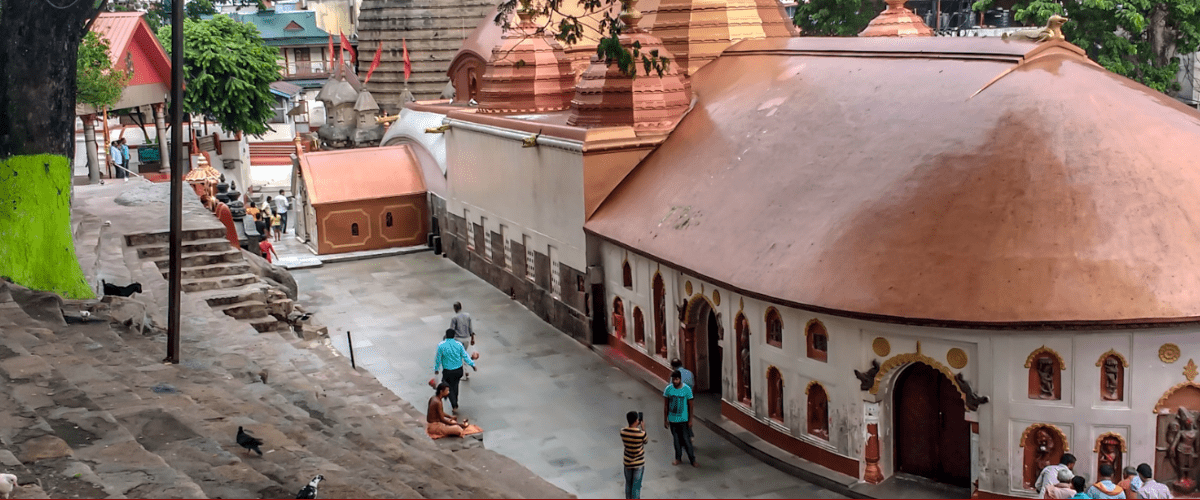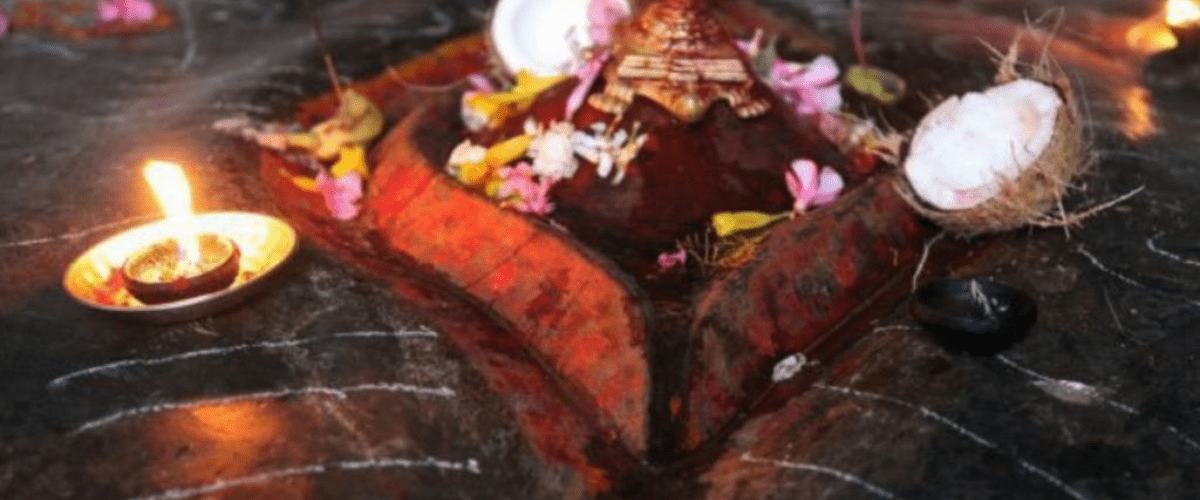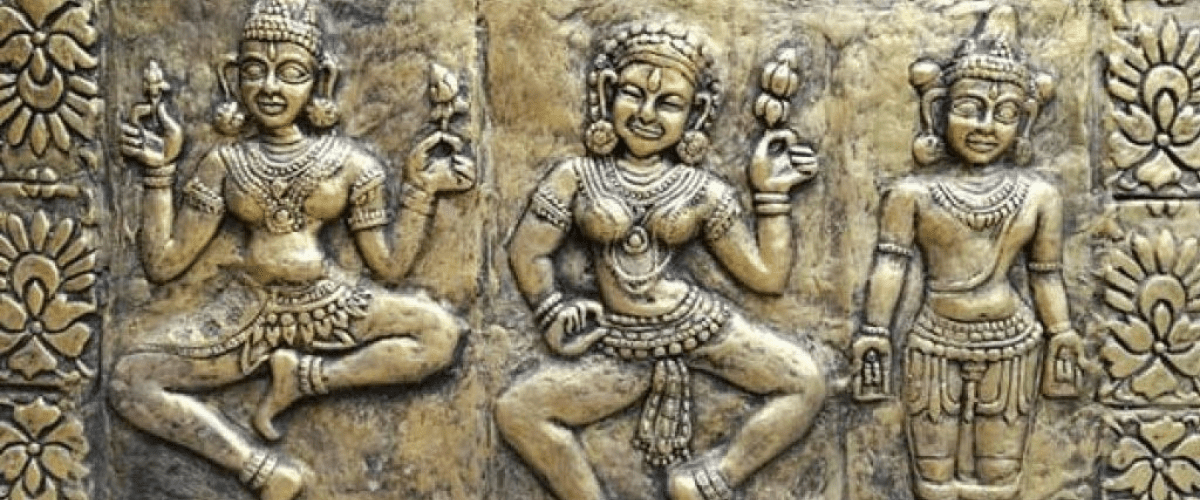

Imagine a temple nestled amidst emerald hills, where ancient legends intertwine with vibrant rituals and the very air hums with the power of the divine feminine. This is the captivating reality of the Kamakhya Temple in Guwahati, Assam, a pilgrimage site that beckons not just devotees but also curious travelers seeking to unravel its mysteries. So, fasten your seatbelts, dear pilgrims, as we embark on a detailed visual journey through this enigmatic temple!
Close your eyes and picture a goddess who embodies fertility, desire, and the very spark of creation. That’s Kamakhya, also known as Kameshwari, the revered deity residing within the temple. As one of the 51 Shakti Peethas, she is believed to reside in the form of the ‘Yoni’, representing the sacred source of life itself. Her various manifestations within the temple complex – Sundari, Tripura, Tara, Bhuvaneshvari, Bagalamukhi, and Chinnamasta – each possesses unique attributes, reflecting the multifaceted nature of the divine feminine.


Close your eyes and picture a goddess who embodies fertility, desire, and the very spark of creation. That’s Kamakhya, also known as Kameshwari, the revered deity residing within the temple. As one of the 51 Shakti Peethas, she is believed to reside in the form of the ‘Yoni’, representing the sacred source of life itself. Her various manifestations within the temple complex – Sundari, Tripura, Tara, Bhuvaneshvari, Bagalamukhi, and Chinnamasta – each possesses unique attributes, reflecting the multifaceted nature of the divine feminine.


Step back in time, where legends whisper tales of the temple’s origin. Some believe it predates recorded history, while others link it to the mythological Sati and Shiva. Archaeological evidence suggests the temple was built around the 8th-9th century, undergoing several renovations and expansions over the centuries. The present structure, a harmonious blend of architectural styles, stands as a testament to its rich past.
The roots of the Kamakhya Devi Temple delve deep into the pages of history. Legend has it that when Lord Shiva’s consort, Sati, sacrificed herself in the yajna (fire ritual) organized by her father Daksha, Lord Shiva danced in sorrow carrying her lifeless body. To put an end to this cosmic disturbance, Lord Vishnu dismembered Sati’s body with his Sudarshana Chakra, and her various body parts fell at different places, giving birth to Shakti Peethas. The spot where her womb and genitals fell became the Kamakhya Devi Temple, symbolizing the creative energy of the universe.
Prepare to be mesmerized by these fascinating facts!
Animal Sanctuary: The temple complex houses a unique animal shelter, providing sanctuary for rescued animals like monkeys, snakes, and even a few elephants.
Hidden Tunnel: Legend whispers of a secret tunnel connecting the temple to the Kamakhya Kamakhya Gaan theatre, used by performers centuries ago.
Living Tantric Traditions: While not openly accessible, tantric rituals are still practiced in specific areas of the temple, adding to its mystique.
Red Spring: During the Ambubachi Mela, one of the natural springs within the complex mysteriously turns red, mirroring the goddess’ menstruation. While the scientific explanation remains unknown, it adds to the temple’s unique aura.
Hillside Caves: Ancient caves nestled on the Nilachal Hills near the temple hold archaeological significance, hinting at the site’s long history.
Secret Chamber: Legend speaks of a hidden chamber within the temple containing ancient treasures and manuscripts, though its existence remains unconfirmed.
And if that’s not enough, the temple is a UNESCO World Heritage Site nominee, recognized for its cultural and historical significance.
Remember, respect is key. Dress modestly, covering your knees and shoulders. Avoid revealing clothing or leather items. Pooja offerings are readily available within the temple complex, with varying costs depending on your desired puja.
Planning a visit? The temple opens its doors to devotees at 8 AM and closes by 1 PM, reopening at 2:30 PM and closing for the day at 5:30 PM. Located atop Nilachal Hill, the temple offers panoramic views of Guwahati, making the journey worthwhile.
In conclusion, the Kamakhya Devi Temple is not just a religious site; it’s a spiritual journey that encapsulates history, architecture, and the essence of divine femininity. As you stand atop Nilachal Hill, overlooking the temple, you can’t help but feel a connection to something greater that transcends time and space.
A1: The Ambubachi Mela is a unique celebration where the temple remains closed for three days during the monsoon, symbolizing the goddess’s annual menstrual cycle and the renewal of the earth’s fertility.
A2: Animal sacrifice is believed to symbolize the eternal cycle of creation and destruction, emphasizing the divine balance in the universe.
A3: The temple is associated with Tantric practices, offering a spiritual hub for those seeking enlightenment through Tantra.
A4: Yes, festivals like Navaratri, Durga Puja, and the Ambubachi Mela offer vibrant celebrations, attracting a surge of devotees.
A5: The temple is atop Nilachal Hill in Guwahati. It is accessible by road, and the journey offers panoramic views of the city.
A6: Absolutely! The divine doors of Kamakhya Devi Temple are open year-round, welcoming visitors to bask in the sacred energy and immerse themselves in the spiritual ambiance.
A7: Prepare to be enchanted by the temple’s architectural marvel! The blend of ancient and modern styles, adorned with intricate carvings, tells a visual story that captivates the soul.
A8: Durga Puja at Kamakhya Devi Temple is a spectacle of devotion and joy. The vibrant festivities honor the divine feminine, creating an atmosphere that resonates with spirituality and celebration.
A9: It’s no myth! The moment you step onto Nilachal Hill and approach the temple, you’ll feel an inexplicable energy – a divine current that connects you to the spiritual realm.
A10: Certainly! Beyond observing, you can actively participate in rituals like offering flowers and prayers, allowing you to engage with the sacred traditions and feel a personal connection with the goddess.
A11: Prepare to have your breath taken away! Standing atop Nilachal Hill, the panoramic view of Guwahati below is not just a sight; it’s a breathtaking embrace that makes you feel intimately connected to the divine and the earthly.
Planning a visit? The temple opens its doors to devotees at 8 AM and closes by 1 PM, reopening at 2:30 PM and closing for the day at 5:30 PM. Located atop Nilachal Hill, the temple offers panoramic views of Guwahati, making the journey worthwhile.
A12: The locals are the heart and soul of Kamakhya Devi Temple. Their unwavering devotion passed down through generations, infuses the temple with a unique spirit that you can feel in every corner.
A13: Navaratri at Kamakhya Devi Temple is a symphony of devotion and festivity. The air is charged with spiritual fervor, and the temple transforms into a haven where the divine and earthly realms joyously collide.
A14: Countless devotees carry stories of miraculous encounters at Kamakhya Devi Temple. From healing to guidance, the goddess’s grace is felt in the personal journeys of those who seek solace within these sacred walls.
Every question about Kamakhya Devi Temple unravels a tapestry of emotions, where the mystical meets the tangible and the divine whispers in the wind. Prepare for a journey that transcends the ordinary, touching the depths of your soul and leaving an indelible mark on your heart.
A15: Embrace the unknown with an open heart! As you approach the temple, let the anticipation and reverence guide your emotions. The first visit is not just a physical journey; it’s a soulful exploration.
Every question about Kamakhya Devi Temple unravels a tapestry of emotions, where the mystical meets the tangible and the divine whispers in the wind. Prepare for a journey that transcends the ordinary, touching the depths of your soul and leaving an indelible mark on your heart.
Copyright © 2024 | All Rights Reserved | The Travel Konnection
WhatsApp us